Ephestia woodiella
Richards & Thomson, 1932
-
 Subfamily: Phycitinae, Phycitini
Subfamily: Phycitinae, Phycitini -
 Wingspan: 14-20 mm
Wingspan: 14-20 mm -
 Flight period: Jun - Sep
Flight period: Jun - Sep -
 Spread: Common
Spread: Common -
 Host plants: Dry vegetable matter, grapes
Host plants: Dry vegetable matter, grapes
Information
The Ephestia woodiella is a moth of the Pyralidae family, with a wingspan of 14-20 mm.
In Europe it is quite widespread, it is absent from Portugal from Ireland, from Belgium, from Denmark, from the Scandinavian peninsula, from Slovenia, from the Baltic countries, from Belarus
and almost all of European Russia with the exception of Eastern European Russia. *
In Italy it is also present in the islands. *
The front wings of Ephestia woodiella are gray in color, are divided almost in half lengthwise and have abundant dark gray dusting
in the upper part (towards the costa) and brown in the lower half.
It has wings divided into three parallel bands (in the discal and postdical region) by two dark lines. The internal line (often serrated), is bordered in clear internally.
The external line with a slightly wavy trend is externally bordered in clear and subsequently has a slight darker shade.
Even these lines, like the shades, change color depending on the area of the wing crossed (dark gray towards the brown costa below). **
Stain in the cell just marked.
Translucent white hind wings with brown dusting, the wings are fringed.
Head, thorax and abdomen are gray. **
The larva has been reported as wintering in silky cocoons on woody portions of the vine. ***
The species was formerly known as Ephestia unicolorella (Staudinger), but according to the recent taxonomy (Leraut 2014), Ephestia unicolorella
it is a distinct species known only in Morocco, Turkey, Iran and Syria and therefore not present in Europe . **, ****
The larva is yellowish white with a double series of dark tubercles on the back and a double series of tubercles on each side, from which white hairs emerge.
Brown / black prothoracic shield, brown / reddish head, the last segment has a large gray / black spot.
The chrysalis is yellow with brown shades at the apexes and abdominal segments **
The larvae feed on they feed on dry plant matter and grapes.****
Although it is not believed that this species is not a parasite of dry foodstuffs, **** the breeding of Ephestia woodiella was carried out
on oat flakes. **
On the vine, the larvae of Ephestia woodiella are found within the cluster starting from veraison.
The trophic activity takes place on already compromised fruits, thus making its damage negligible, consisting at most in surface rosures of the grape by the larvae. ***
* Lepidoptera mundi https://lepidoptera.eu/ - Fauna Europea https://fauna-eu.org/
** Bestimmungshilfe für die in Europa nachgewiesenen Schmetterlingsarten - http://lepiforum.de/ -
*** Vit.En. - http://www.viten.net/tags/altre-tignole/it/1490
**** Online guide to the moths of Great Britain and Ireland - https://ukmoths.org.uk
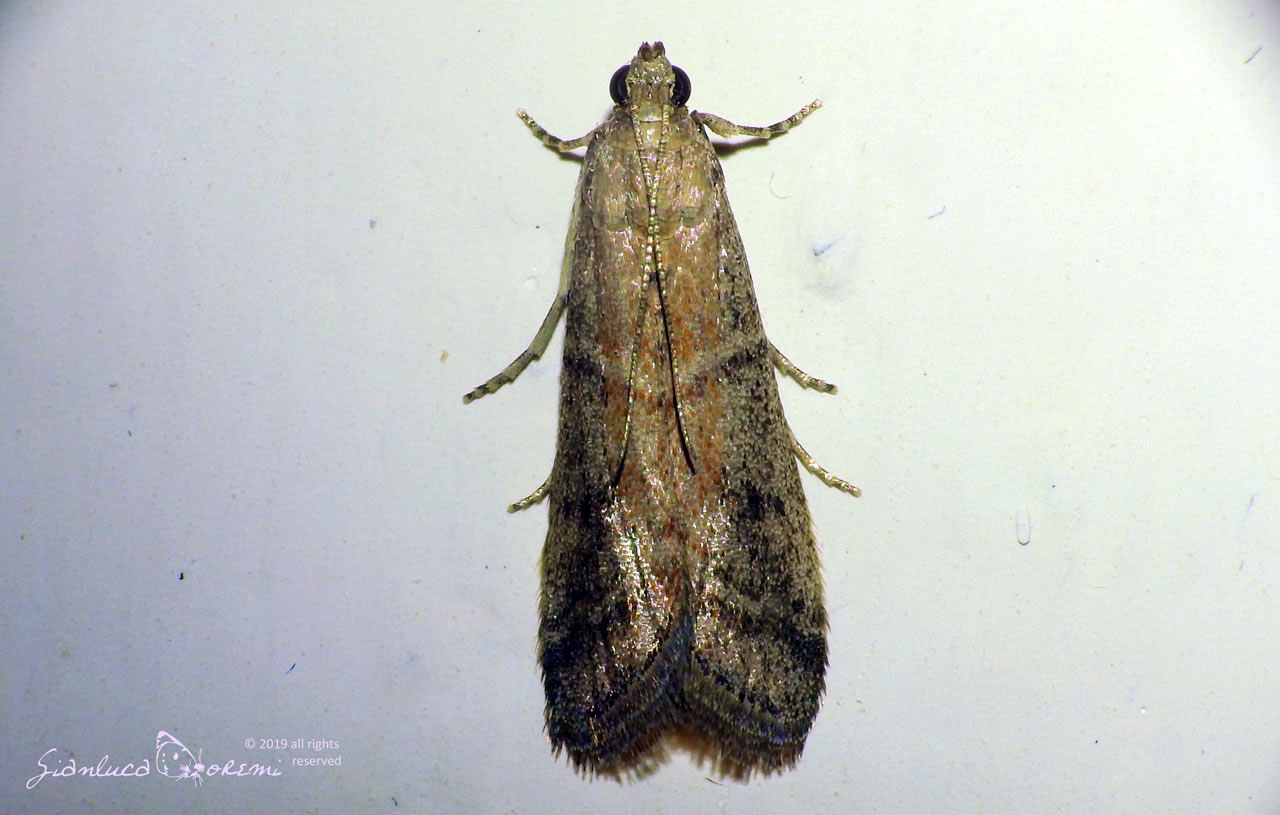
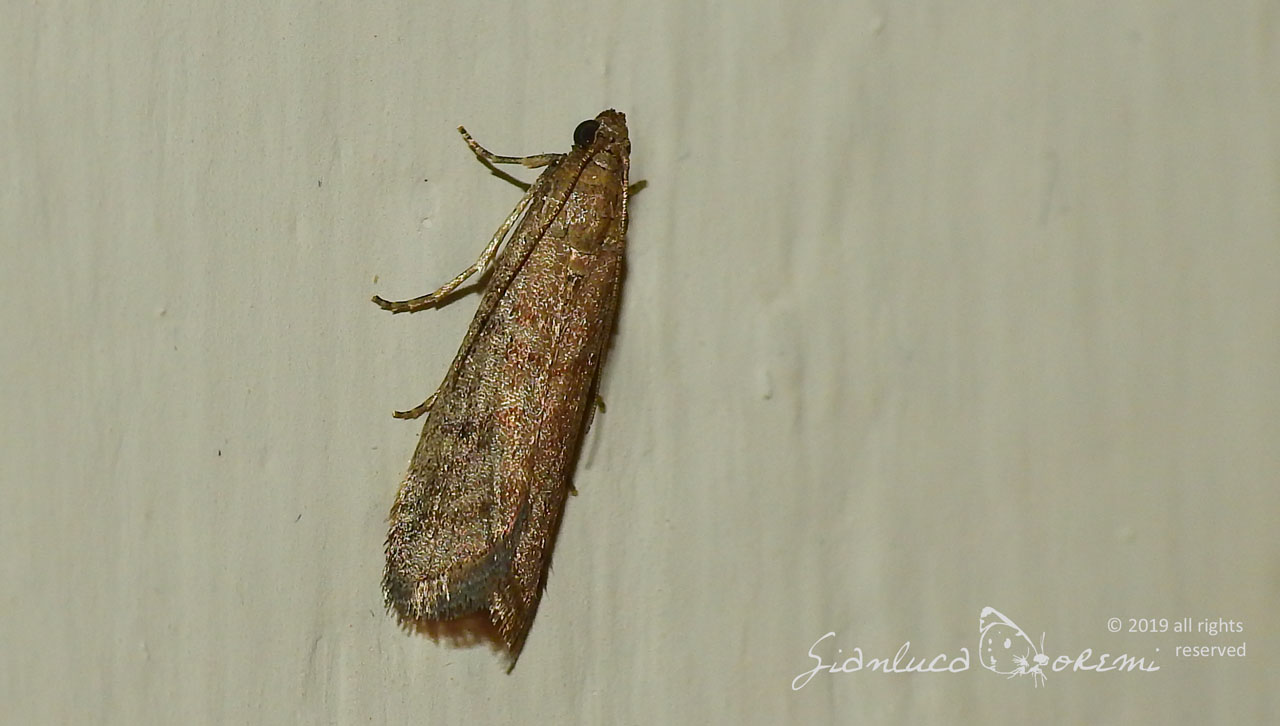

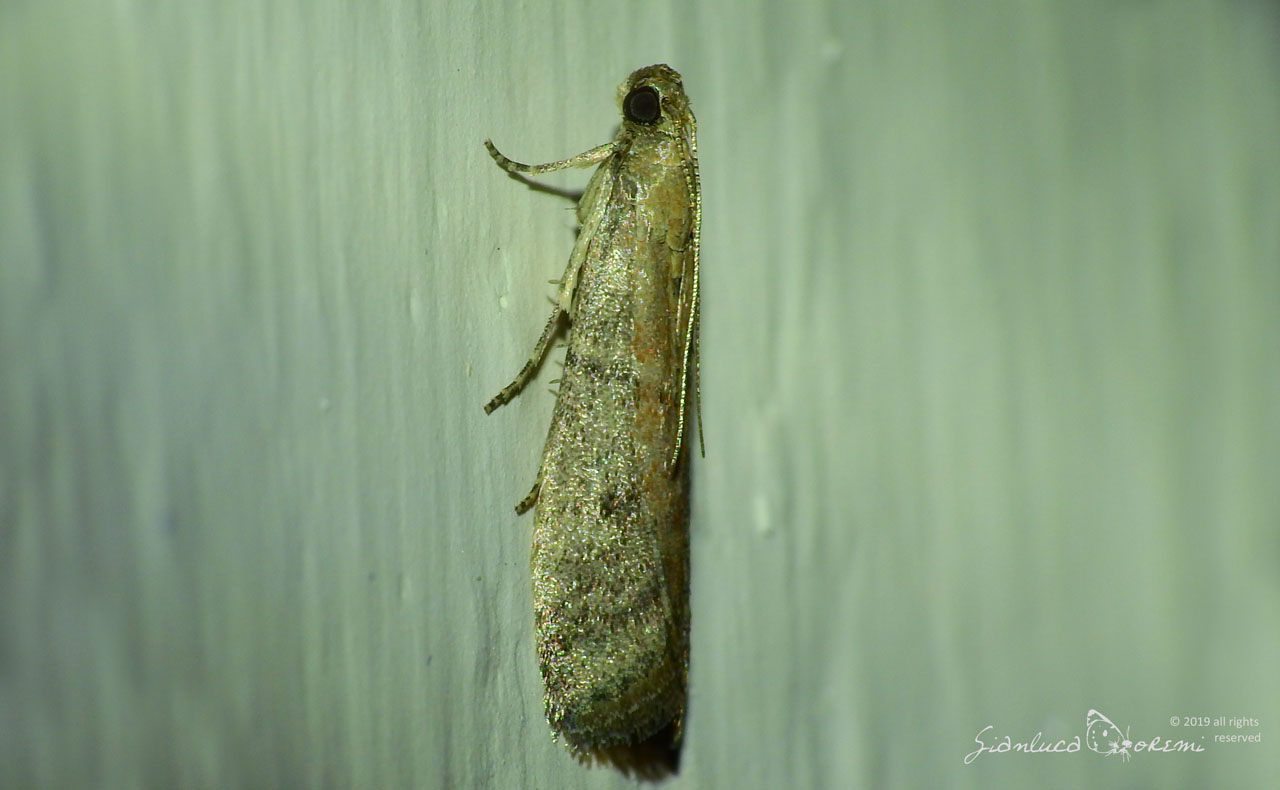
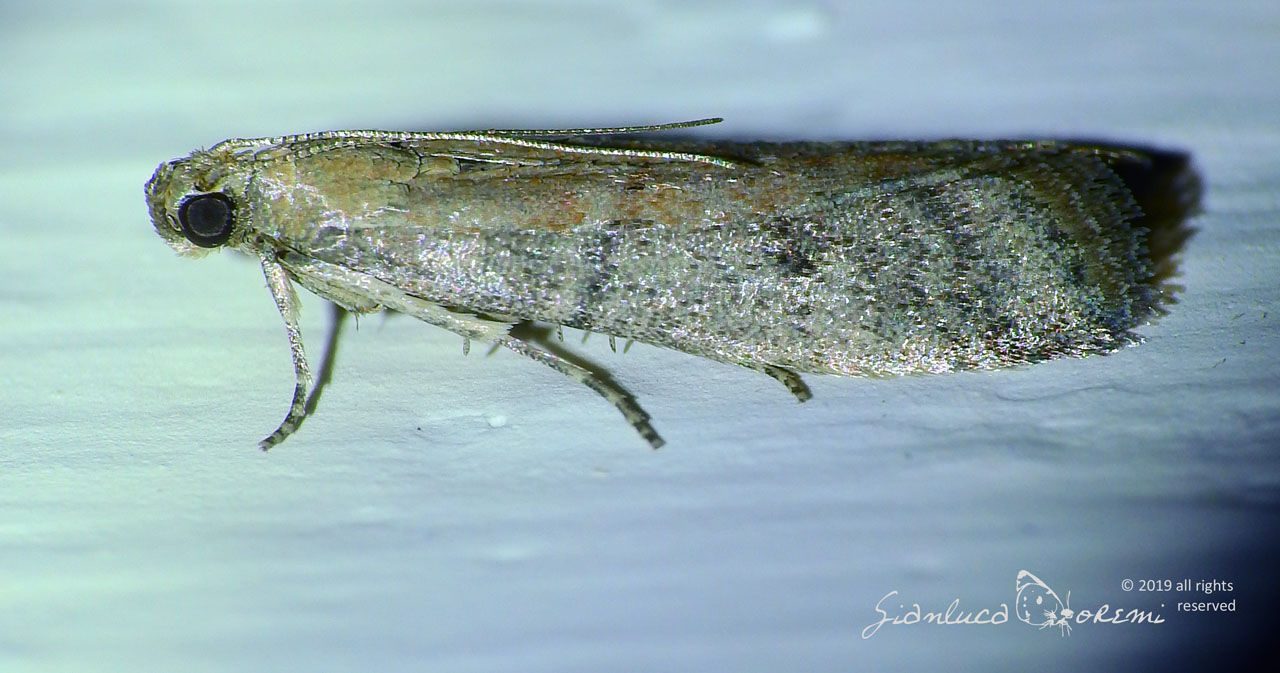

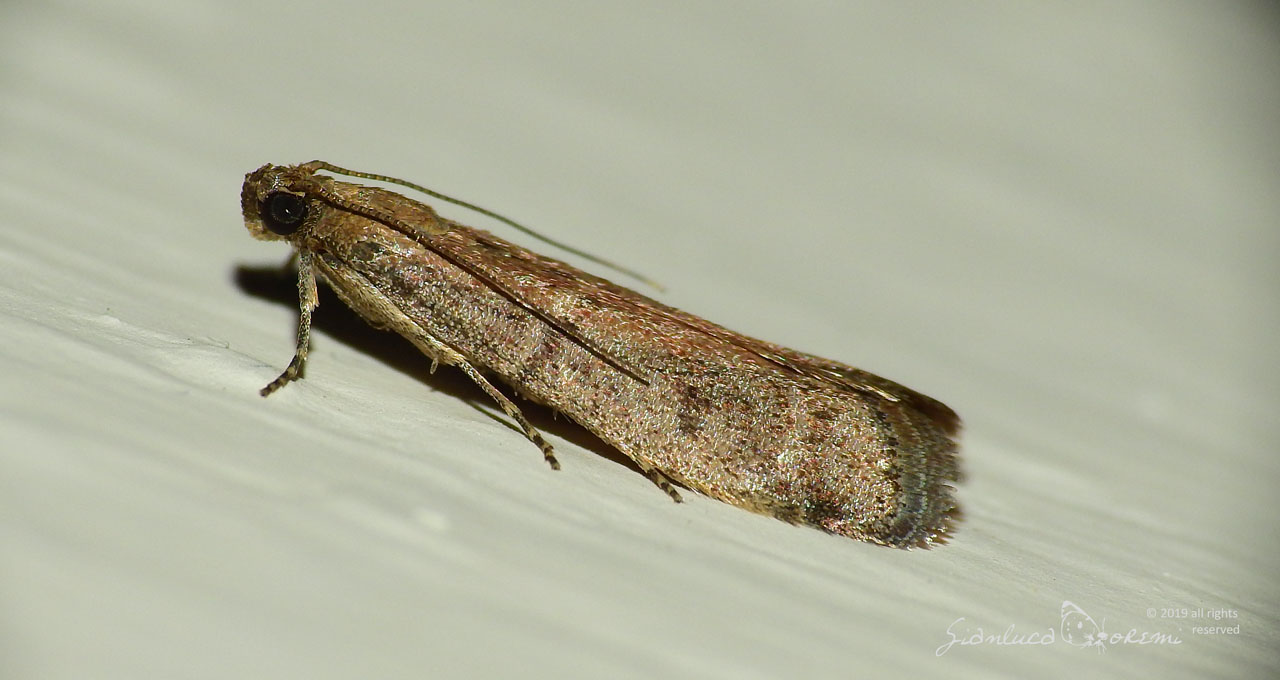


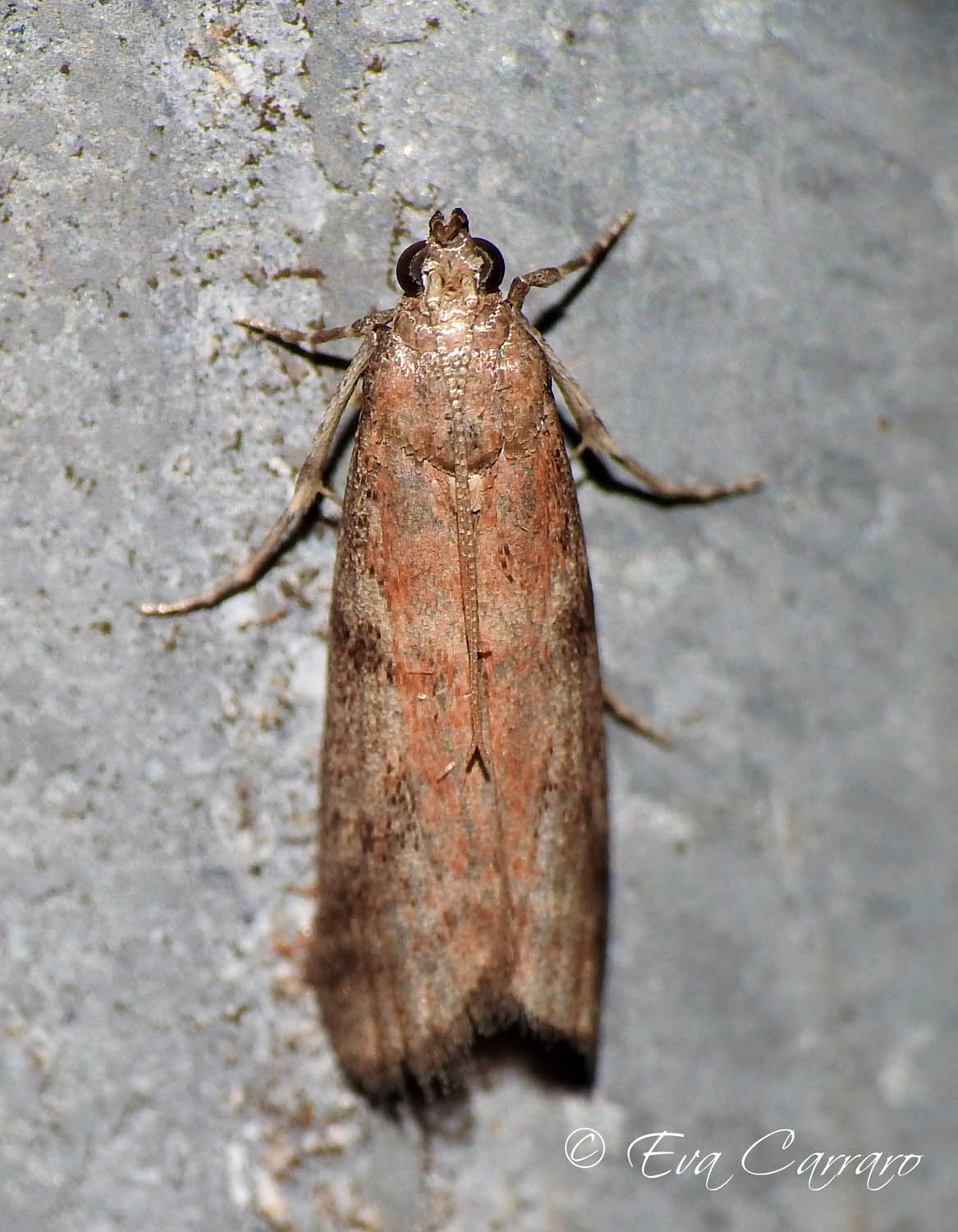
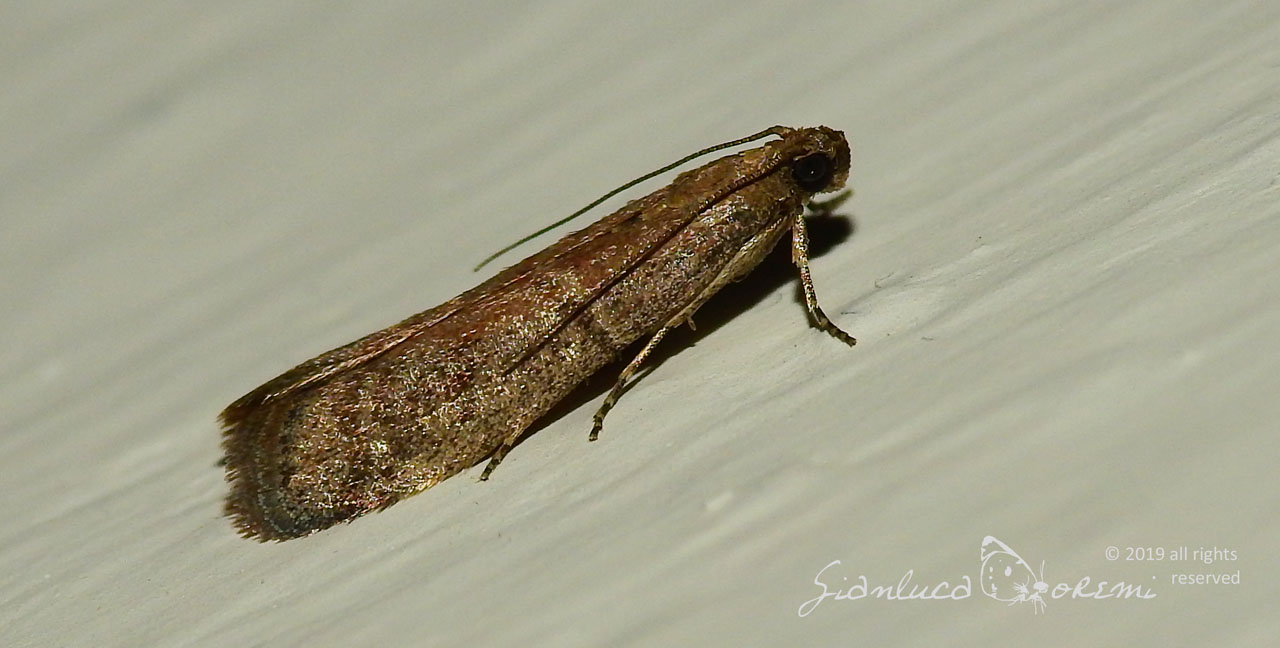
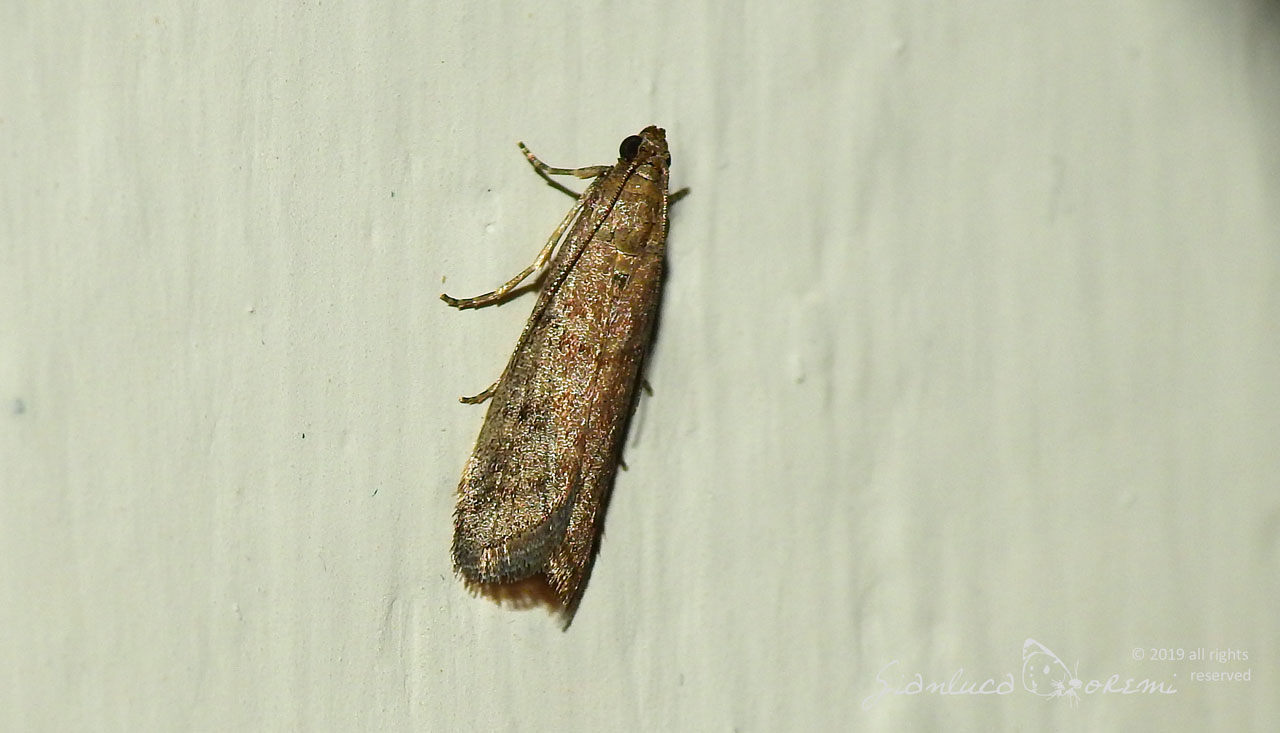
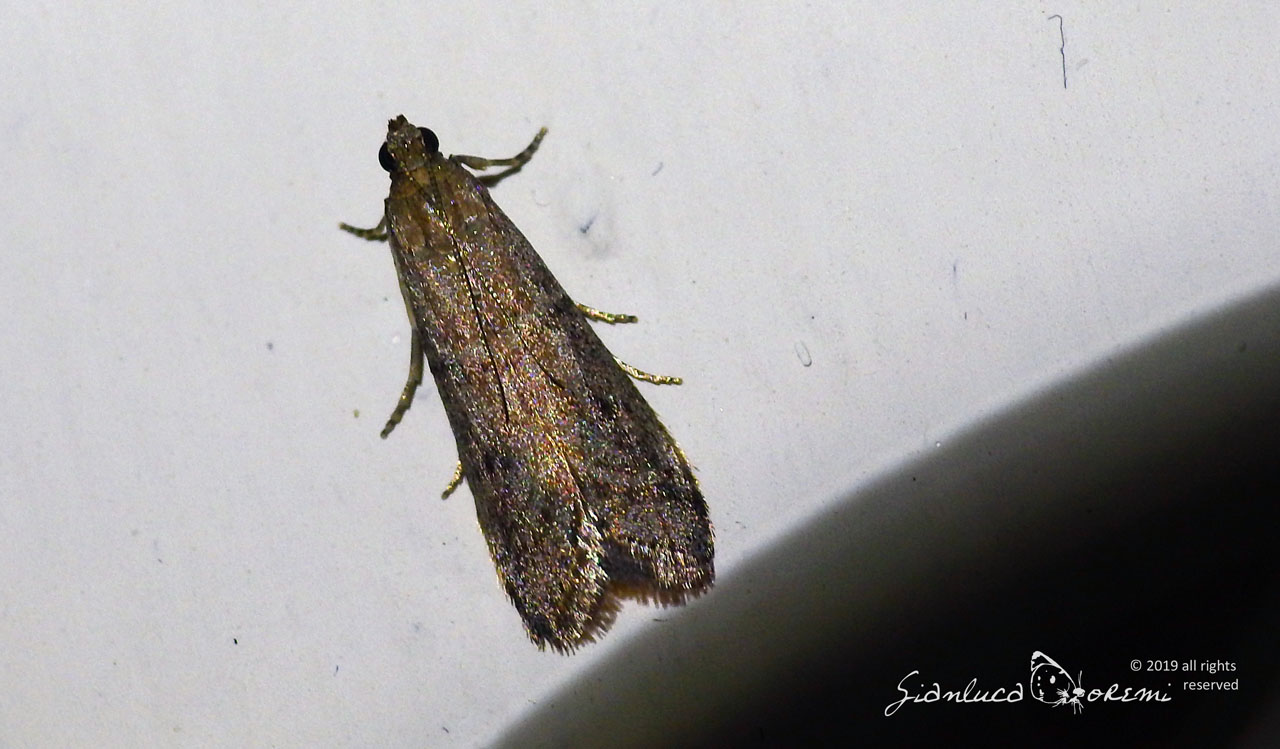

 EN
EN ITA
ITA
Social and publications